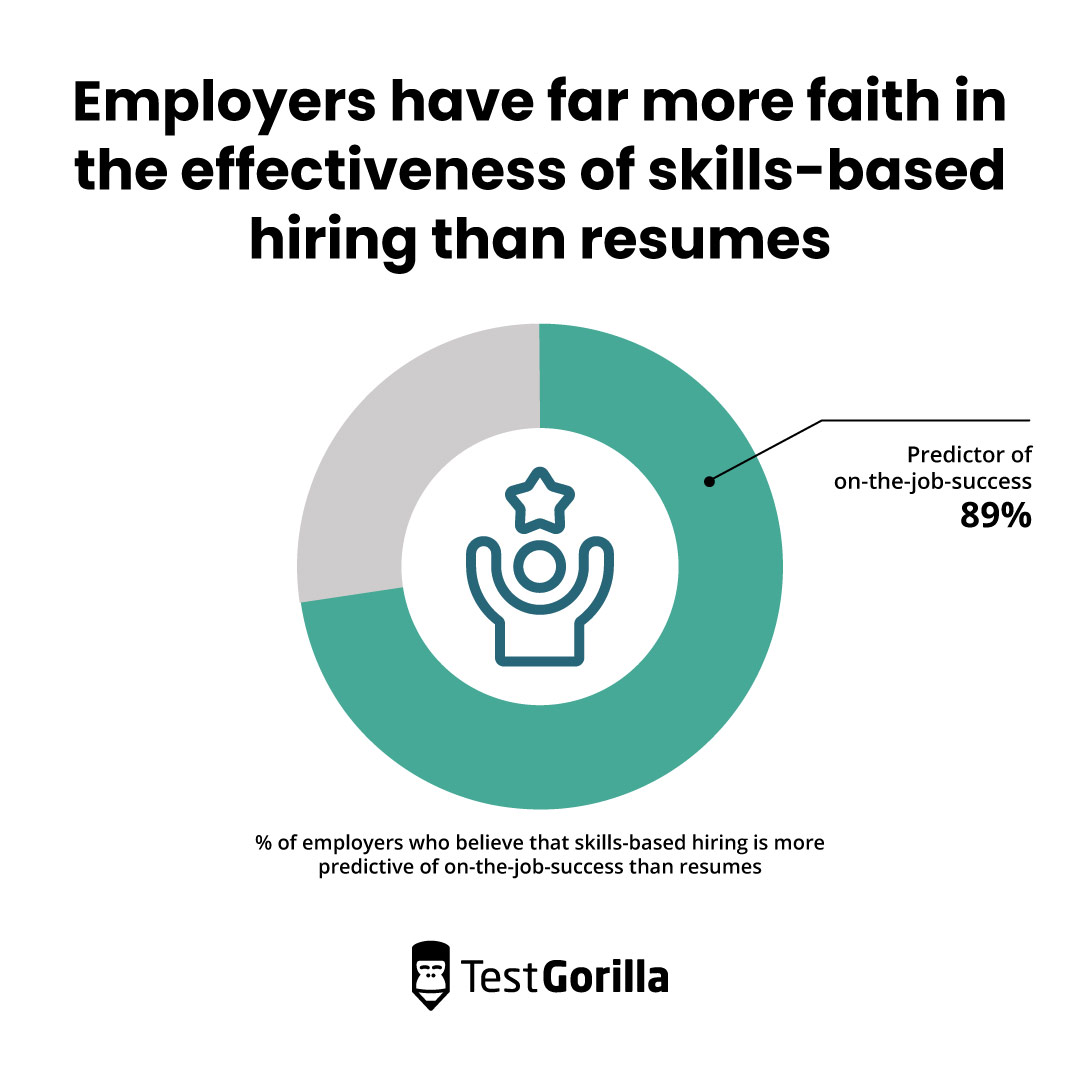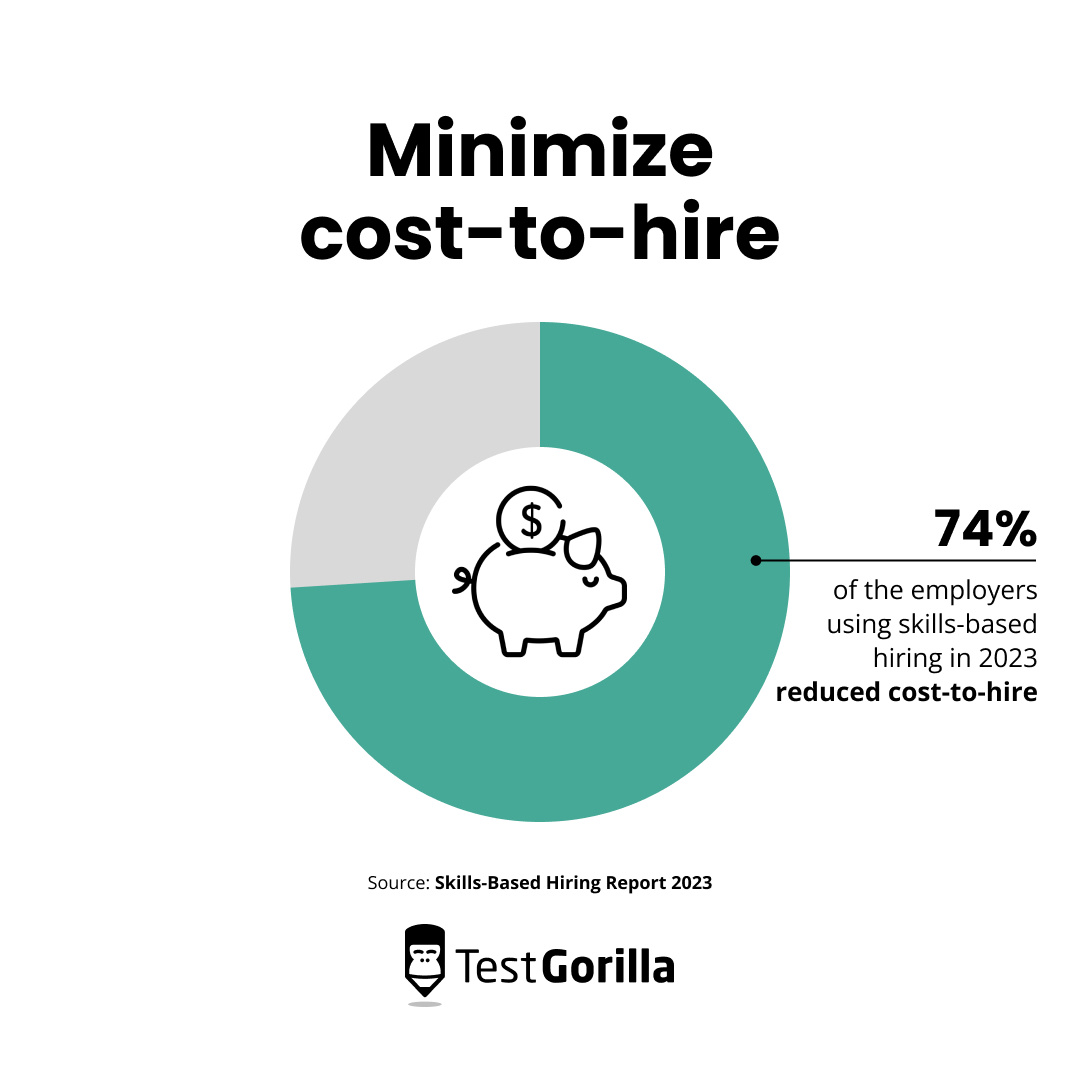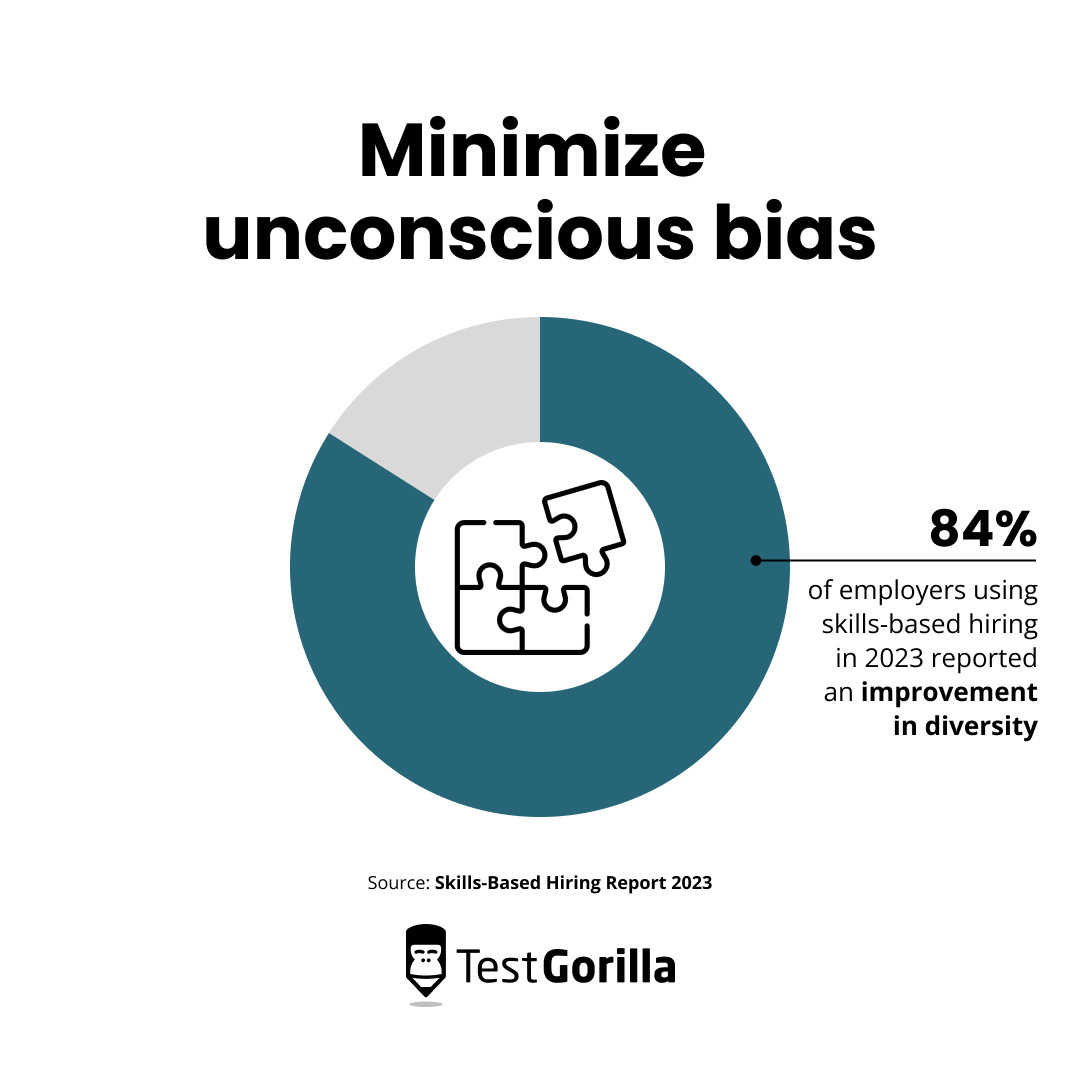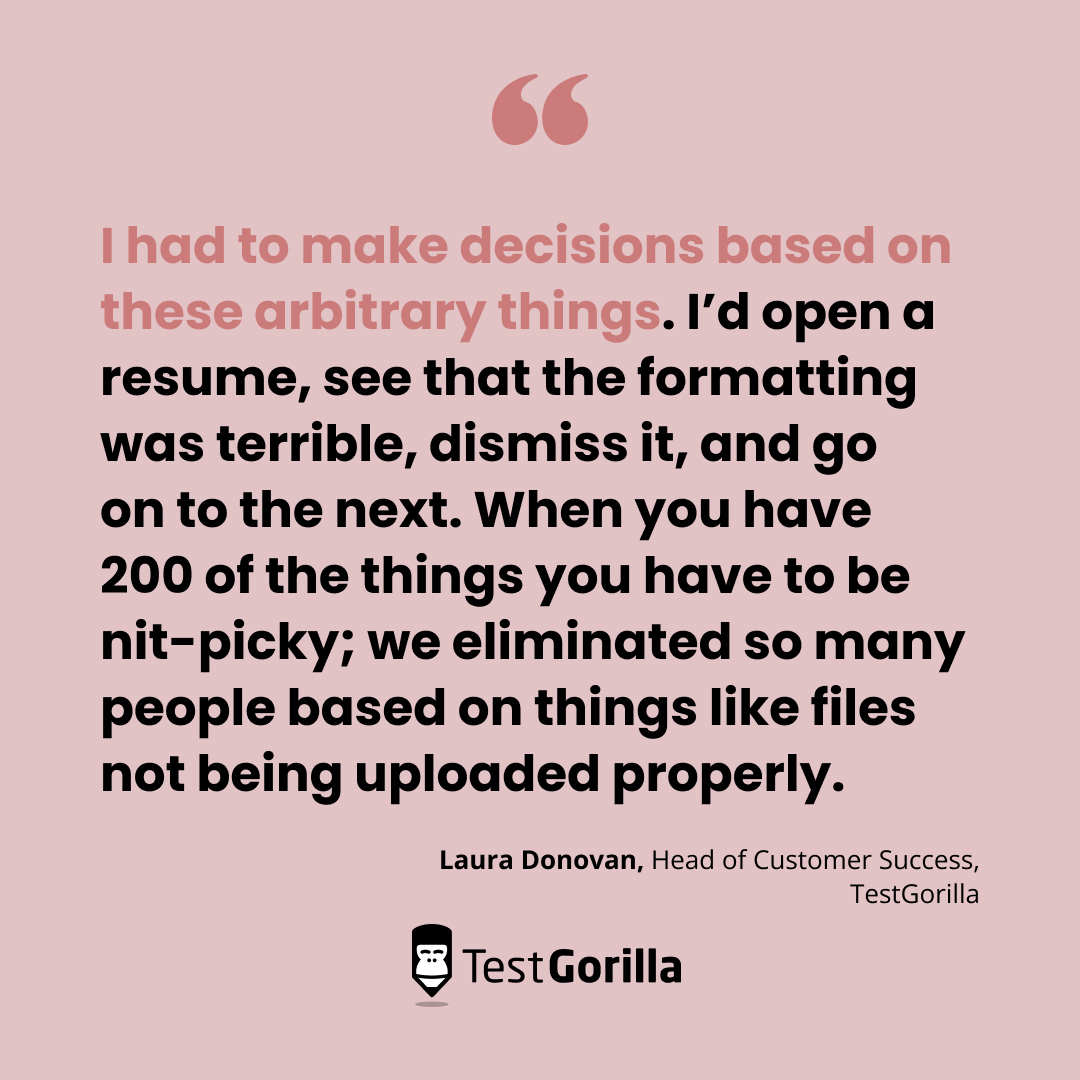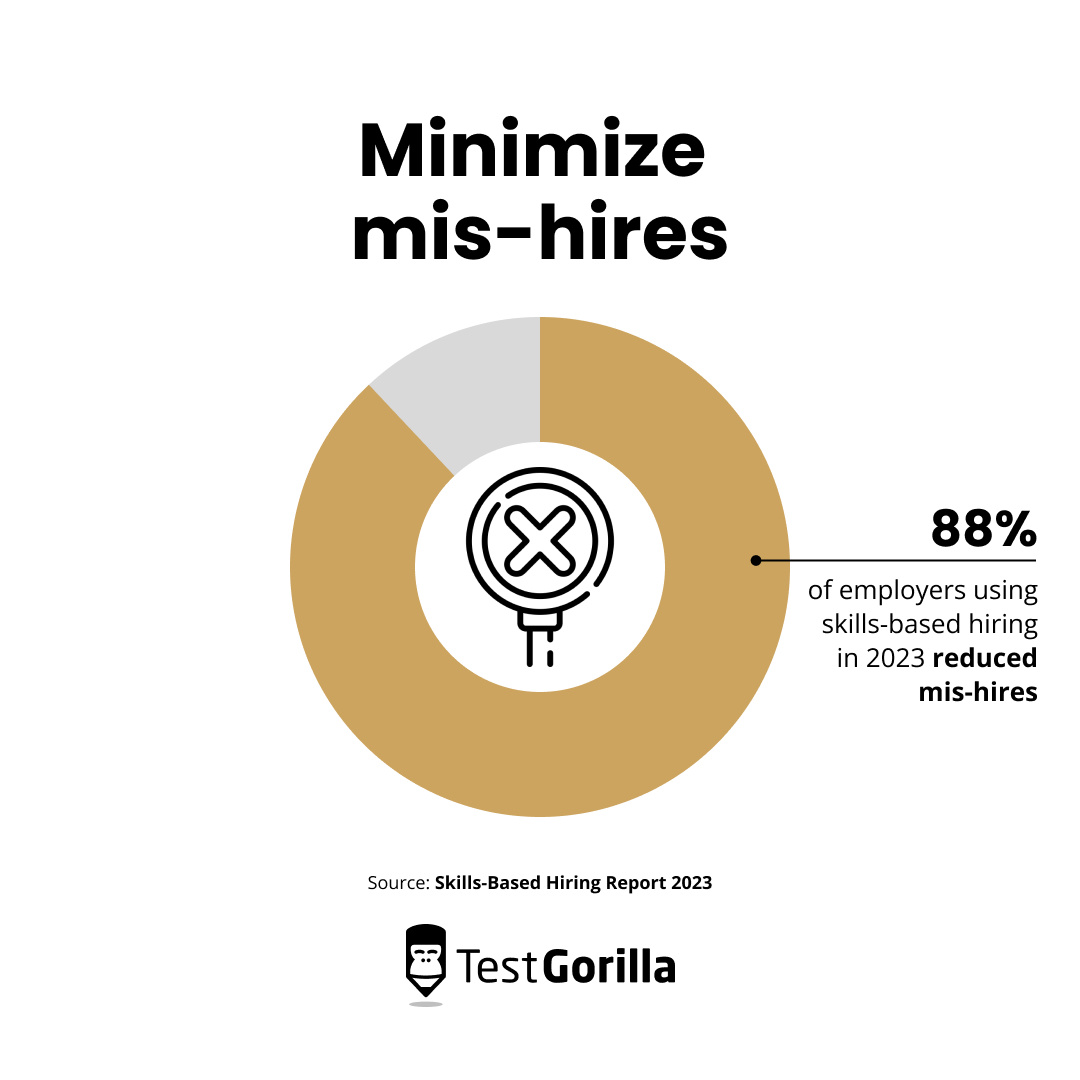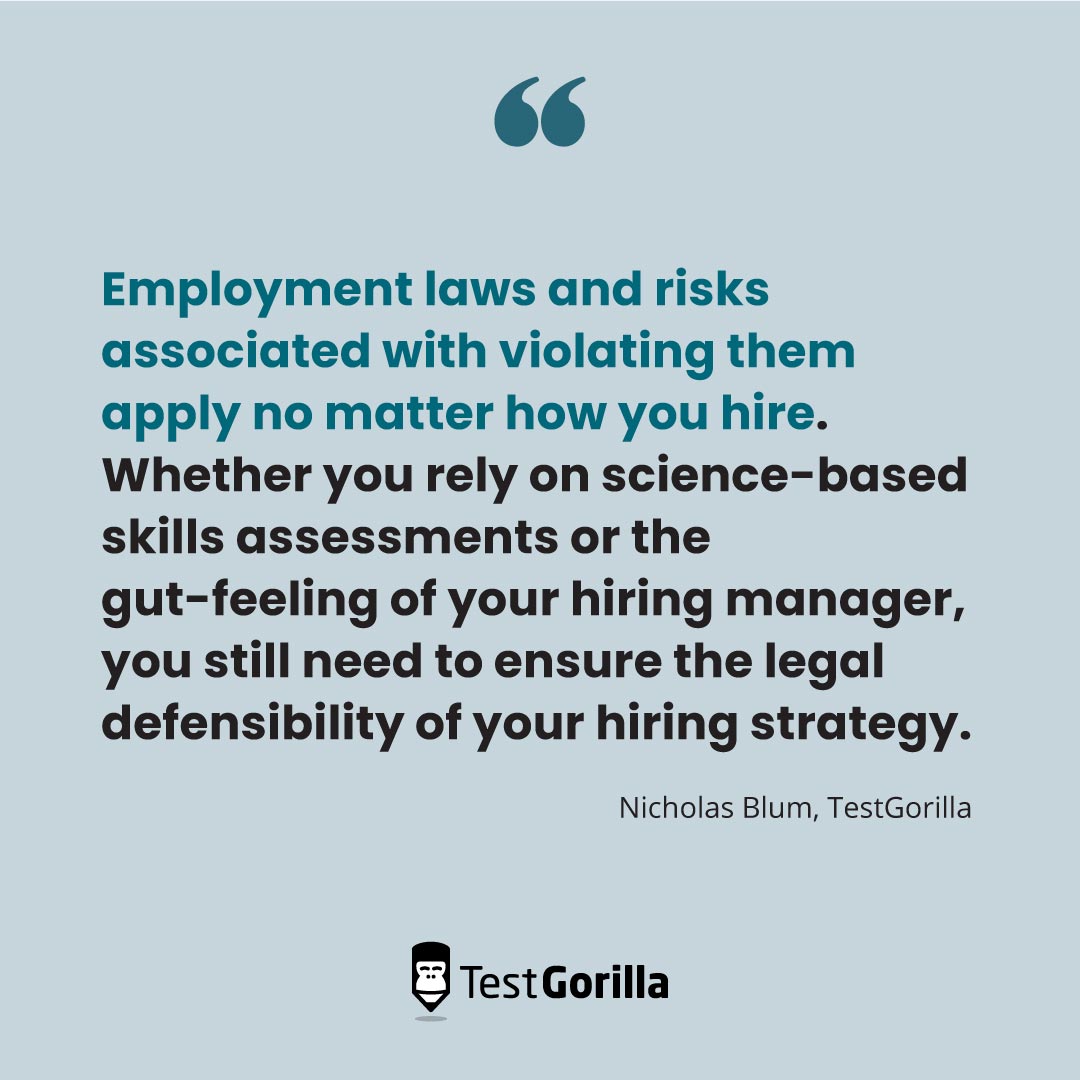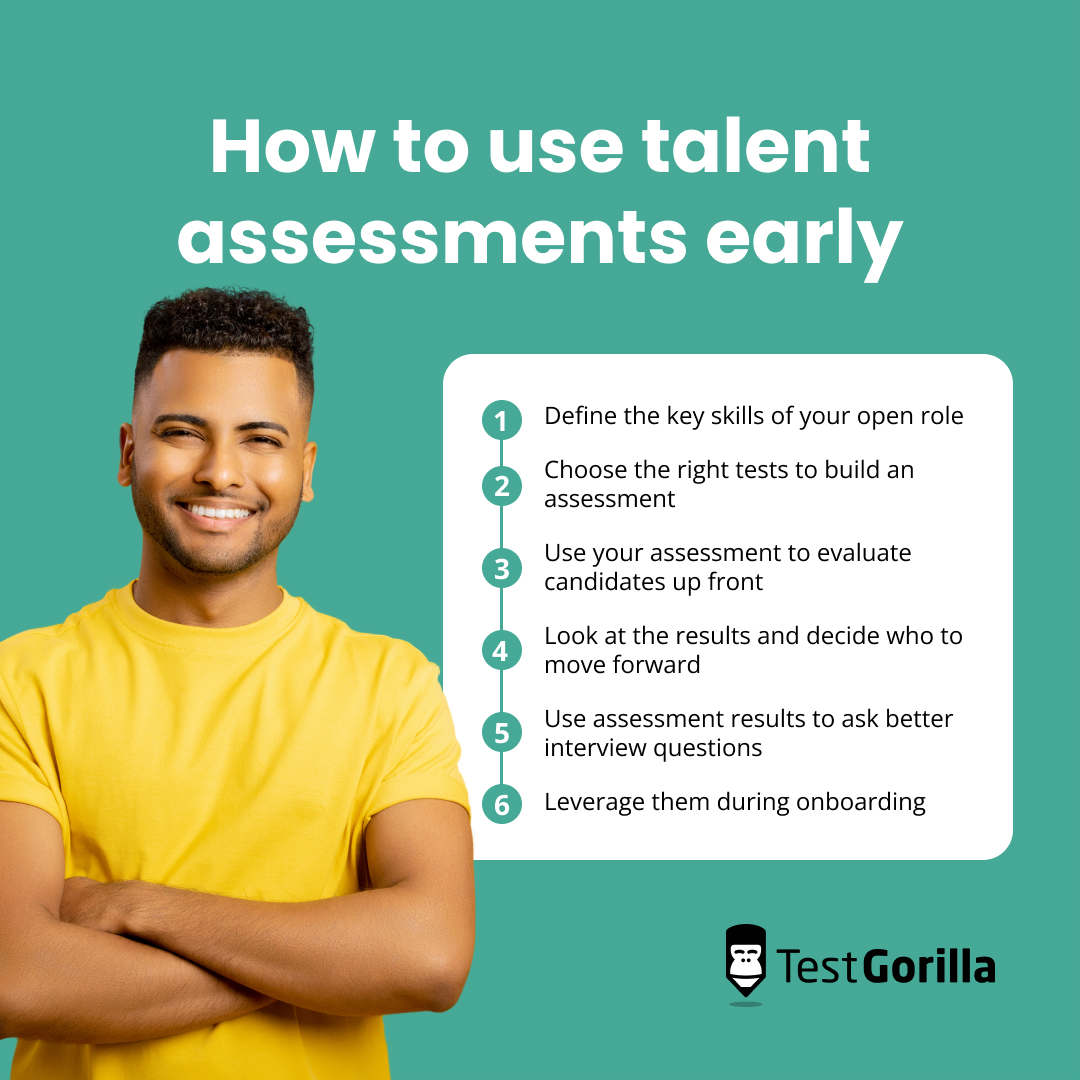Where in the hiring process does a TestGorilla assessment fit best? 5 reasons to assess candidates early
At TestGorilla, we often wax lyrical about why you should use talent assessments for skills-based hiring. Something that we want to address in more depth, although we’ve covered tips for test ordering and data-driven ways to increase candidate satisfaction, is how and when to use them.
In light of that, this science series article will answer the following question – where in the hiring process does a talent assessment fit best?
Table of contents
- When do employers tend to assess candidates?
- Where in the hiring process does a TestGorilla assessment fit best?
- 5 reasons to use TestGorilla early in the hiring process
- The challenges of early assessment – and how to overcome them
- How to use talent assessments early: 6 steps
- Assess your candidates early with TestGorilla
When do employers tend to assess candidates?
Before we go on to answer the question, let’s take a step back and look how employers tend to use talent assessments in the hiring process.
Common practice is to use talent assessments like TestGorilla’s as a decision support tool later in the hiring process. They might use talent assessment results to validate earlier data points from resumes or interviews. This reduces costs if they’re using an assessment vendor that charges per candidate – which is common in the industry – but it has repercussions for your hiring process.
The pitfalls of resume screening before talent assessment
The traditional resume screen that’s usually conducted at the start of the hiring process, before talent assessment, is not optimized for quality. Whether it’s a (biased) manual screen by the recruiter or a use of an off-the-shelf resume screener (also biased), at best you’re doing barely better than random chance at filtering your applicant pool.
Of the employers we surveyed for The State of Skills-Based Hiring 2023:
34% receive too many resumes to read
43% find it difficult to rank candidates using resumes
43% struggle to determine an applicant’s skills from their resume
51% struggle to determine whether the resumes of their applicants are accurate
In contrast, 89% of them believe that skills-based hiring is more predictive of on-the-job success than resumes. Despite this, the majority of employers will use resumes – a tool that most of them find difficult and inaccurate – before a talent assessment. We want to help them change this.
Where in the hiring process does a TestGorilla assessment fit best?
The only way to put skills first in the hiring process is to test for them first – that is, before resumes, before cover letters, and before interviews.
In light of this, we encourage employers to use TestGorilla assessments early on in the hiring process. This way, your talent assessment functions to measure and rank the skills of all of your candidates, rather than simply to validate the skills of a smaller group of candidates that you’ve already shortlisted by other means.
The best insights on HR and recruitment, delivered to your inbox.
Biweekly updates. No spam. Unsubscribe any time.
5 reasons to use TestGorilla early in the hiring process
If you’re wondering why, here are 5 reasons to use a TestGorilla talent assessment early in the hiring process.
1. It’s all you can eat
Once you build an assessment with TestGorilla, you can assess as many candidates as you like without incurring extra charges. In other words, TestGorilla is designed to be used early.
Our pricing model reflects this design: No matter which plan you’re on, you can assess as many candidates as you like for the same price. It’s like an all-you-can-eat buffet for skills-based hiring – employers can get more bang (skills-based candidate data) for their buck by using TestGorilla this way.
2. Cut time-to-hire
Talent acquisition teams have a limited amount of time. By asking all candidates to complete an assessment first, rather than staring with screening their resumes, these teams can ensure that they spend their hours with the skilled, quality candidates identified by a job-relevant assessment. Less resumes read = more time saved.
74% of the employers using skills-based hiring in 2023 reduced cost-to-hire.
3. Minimize unconscious bias
When you assess candidates early on in the hiring process, your initial screening decisions are data-driven. When a resume screen comes first, these initial decisions are instead made on arbitrary factors – experience with an impressive company name, education at a school you’re fond of, a stint at Harvard – and unconscious bias creeps in.
84% of employers using skills-based hiring in 2023 reported an improvement in diversity.
4. Explore untapped talent pools
The results of a talent assessment might lead you to consider candidates who you otherwise wouldn’t have looked twice at. Needles in the haystack, diamonds in the rough, purple squirrels – whatever you want to call those rarefied and talented individuals, we all know that they can come from backgrounds and experiences that you’d never expect. You’re more likely to find them if you screen with talent assessments, rather than resumes, first.
Talking about her experiences with recruitment before discovering TestGorilla, our very own Laura Donovan explains: “I had to make decisions based on these arbitrary things. I’d open a resume, see that the formatting was terrible, dismiss it, and go on to the next. When you have 200 of the things you have to be nit-picky; we eliminated so many people based on things like files not being uploaded properly.”
If you test for skills first, your nit-pickiness won’t get in between you and top candidates.
5. Give your candidates an early job preview
When you conduct a job-relevant talent assessment early, candidates can see what is valued in this role at your specific company. Because the tests assess the skills and characteristics that will be necessary for success in this job, it sends a clear signal of what is needed in this role. In other words, it gives candidates an early job preview.
If it’s not for them, they’ll know as soon as they’ve completed the assessment – rather than further into the recruitment process when you’ve spent more time and resources on them, or during onboarding (at which point, they’ll count as a mis-hire).
88% of employers using skills-based hiring in 2023 reduced mis-hires.
The challenges of early assessment – and how to overcome them
The benefits of assessing candidates early with TestGorilla are clear. But, since early assessment is not the typical way to use talent assessments in the industry, there are some challenges to using them this way.
The good news is, these can easily be overcome. To help with that, let’s go through the two main challenges faced by employers who want to start using talent assessments early (as well as how they can be overcome).
1. It feels impersonal to send candidates an assessment first
Imagine you’re a jobseeker who has just come across a job advertisement that piques your interest. Perhaps you don’t yet know that much about the company or the job itself. You click ‘apply’ and are immediately asked to complete a comprehensive assessment.
This can feel impersonal for candidates – they might think: Do I really want to go through that when I’m not sure about the job yet? Employers, then, might not want to take this risk by assessing candidates early – because they want to avoid a situation where candidates are put off because they’ve been asked to take an assessment right away.
This is a valid concern, but employers can overcome it by ramping up their candidate engagement. This can be done by bringing the opportunity to life: adding intro videos to explain the process and discuss the role and team, or sharing information about the company culture. Communication and honesty are key. Make sure your applicants know what they’re signing up for, and why this is the way you’ve decided to conduct your hiring process.
2. Regulations regarding the use of tests
The other major challenge to consider is that in some jurisdictions, it may not be appropriate to use assessments as a standalone screening tool. If you are hiring in a jurisdiction that has regulation around this, it’s crucial to ensure that you’re using talent assessments in a manner that is appropriate, job-relevant, and legally defensible.
Employers can overcome this concern by getting familiar with the laws and regulations in their specific country and region regarding the use of pre-employment tests in selection. Any questions on the legal defensibility of tests in your area should be consulted with a licensed attorney.
Our guide to legal risk and skills-based hiring offers plenty of advice and explanation around using talent assessments in a way that’s ethical, job-relevant, and legally defensible. Although the content there should not be construed as legal advice on any subject matter, it explains how we ensure the legal defensibility of our tests at TestGorilla.
How to use talent assessments early: 6 steps
If you want to start using TestGorilla to assess your candidates at the start of your hiring process, here are 6 easy steps to follow.
Define the key skills of your open role: What’s the first rule of hiring? Ask any organizational psychologist and they will tell you: “job analysis, job analysis, job analysis”. Conducting a job analysis of the role you’re hiring for to identify your requirements and drivers of success is key to ensuring you choose job-related skills tests.
Choose the right tests to build an assessment: Using your job analysis and the key skills you’ve identified, choose relevant tests and build an assessment. Make sure to avoid a skill overlap when selecting tests.
Use your assessment to evaluate candidates up front: Ask all of your applicants to take this assessment first. You can assess as many candidates as you like using one TestGorilla assessment.
Look at the results and decide who to move forward: You can use TestGorilla’s benchmarking tools to automatically rank your candidates and see who performed best on the assessment. Use this data to decide who to move forward.
Use assessment results to ask better interview questions: Leverage the test results to ask better questions during subsequent interviews. To learn more about conducting great interviews, read our blog about mastering the art of structured interviews.
Leverage them during onboarding: Onboard and develop your talent with their test results in mind: They can tell you a lot about someone’s strengths and areas for growth.
Assess your candidates early with TestGorilla
The case is strong for using TestGorilla early in the hiring process. Ready to give it a go? Book a demo to talk to us or sign up for a free plan to get stuck in and create your first assessment.
Science series materials are brought to you by TestGorilla’s team of assessment experts: A group of IO psychology, data science, psychometricians, and IP development specialists with a deep understanding of the science behind skills-based hiring.
You've scrolled this far
Why not try TestGorilla for free, and see what happens when you put skills first.


